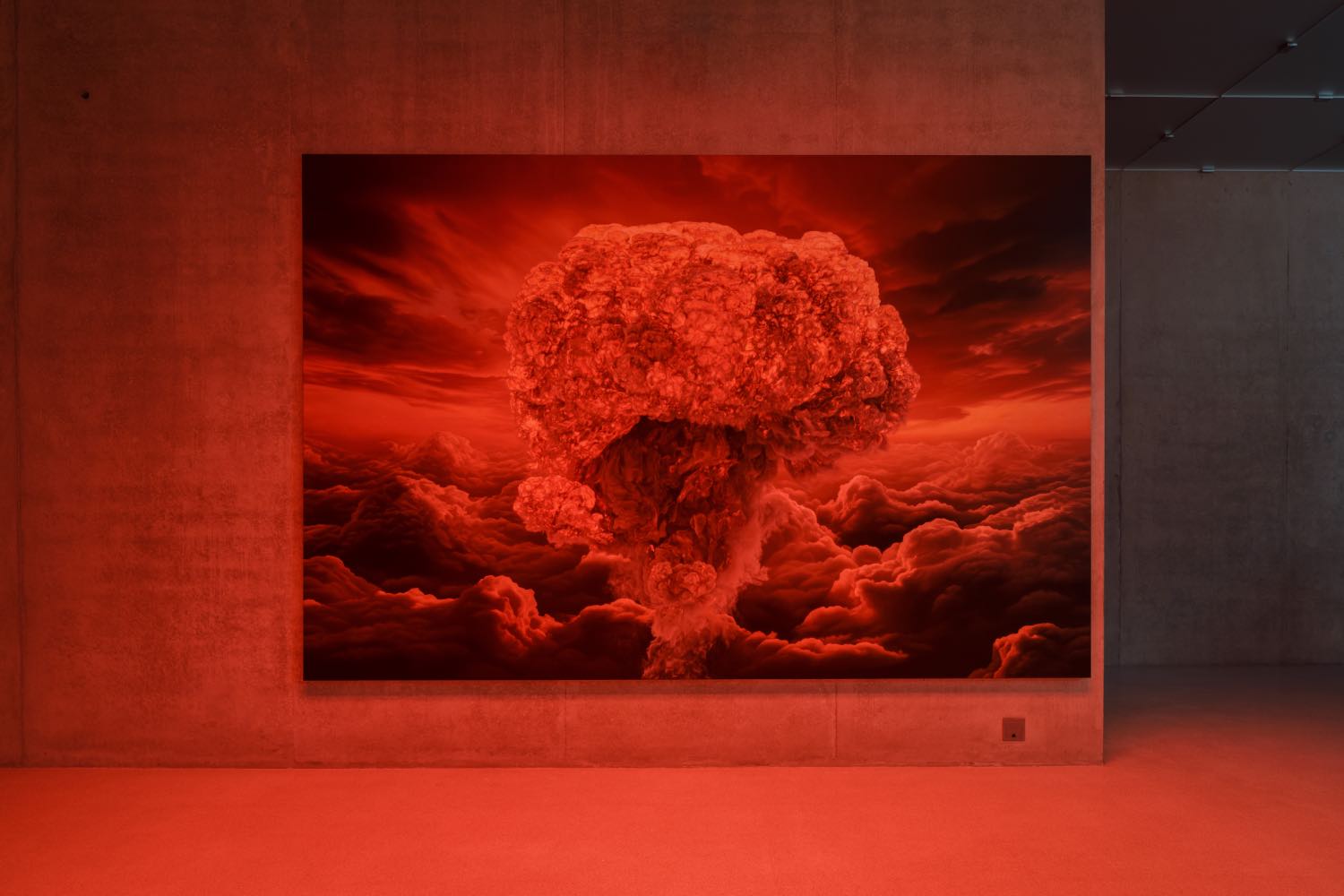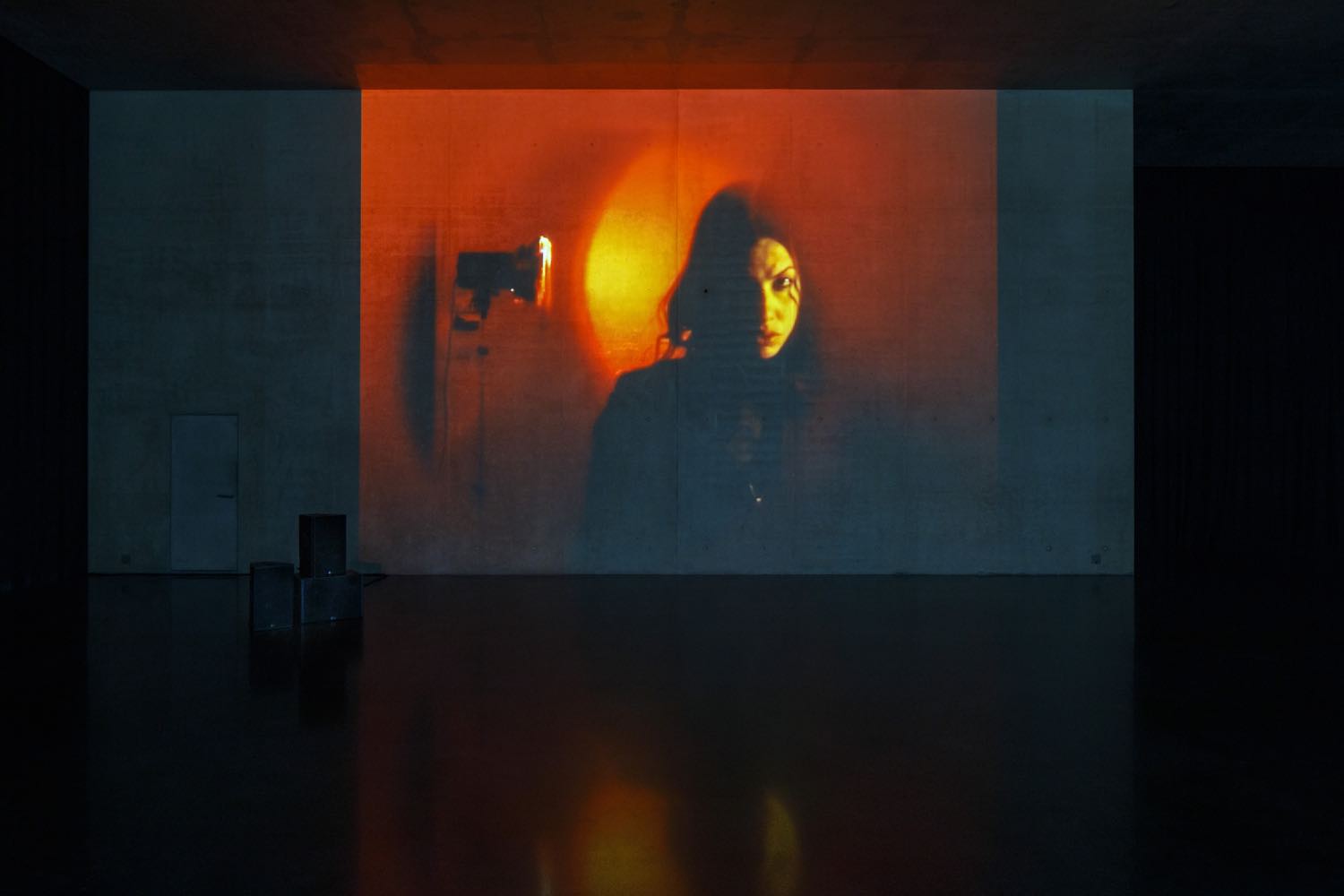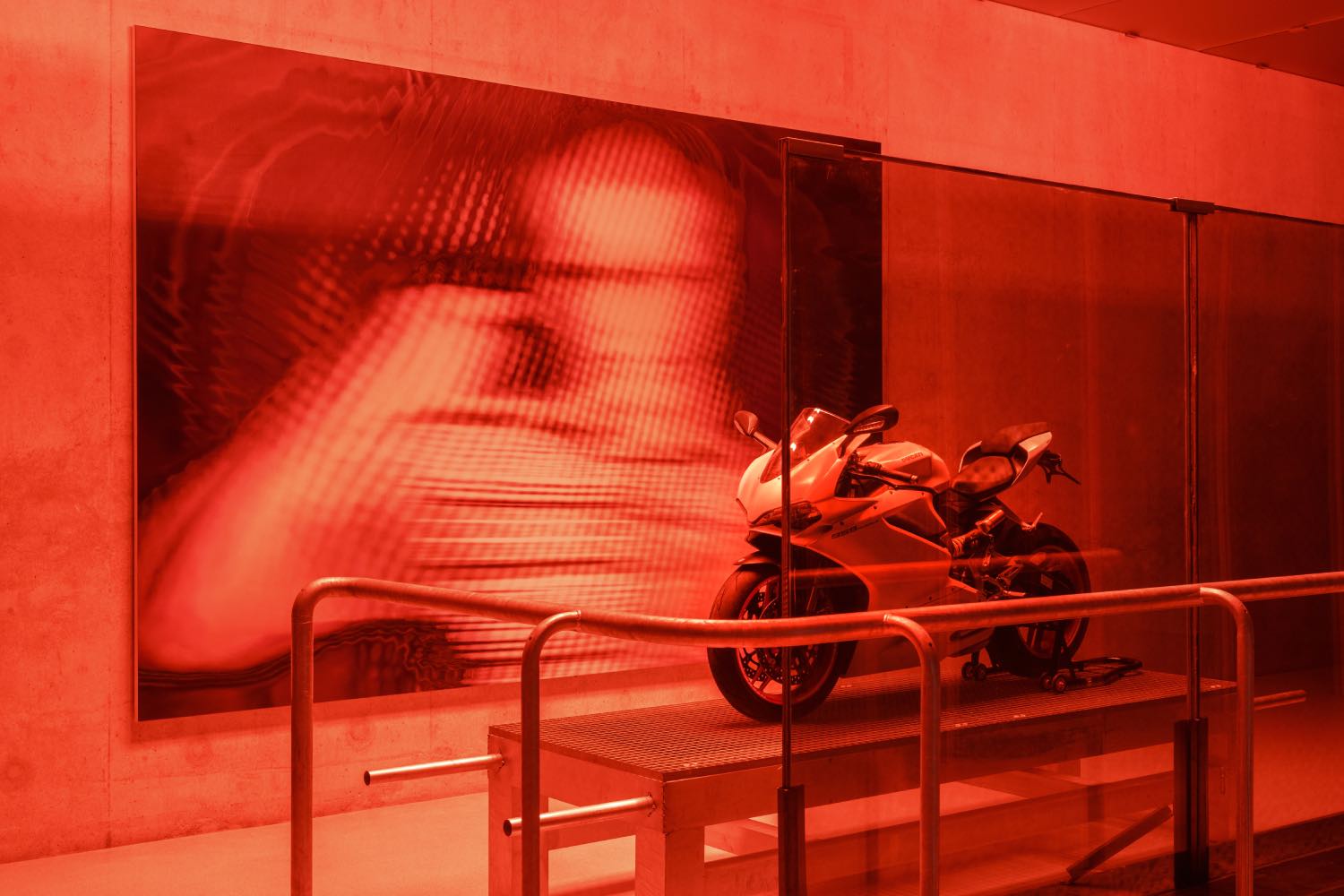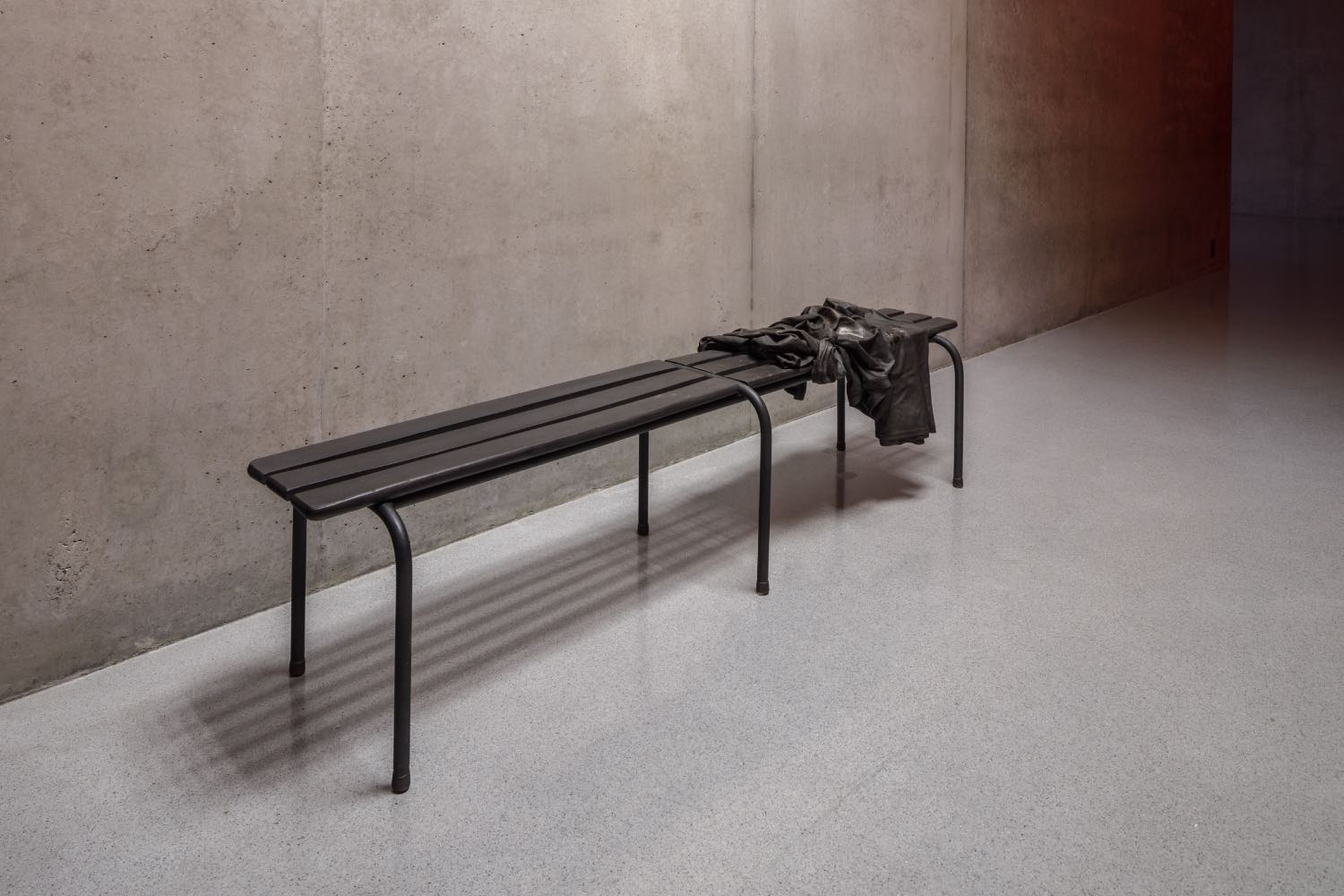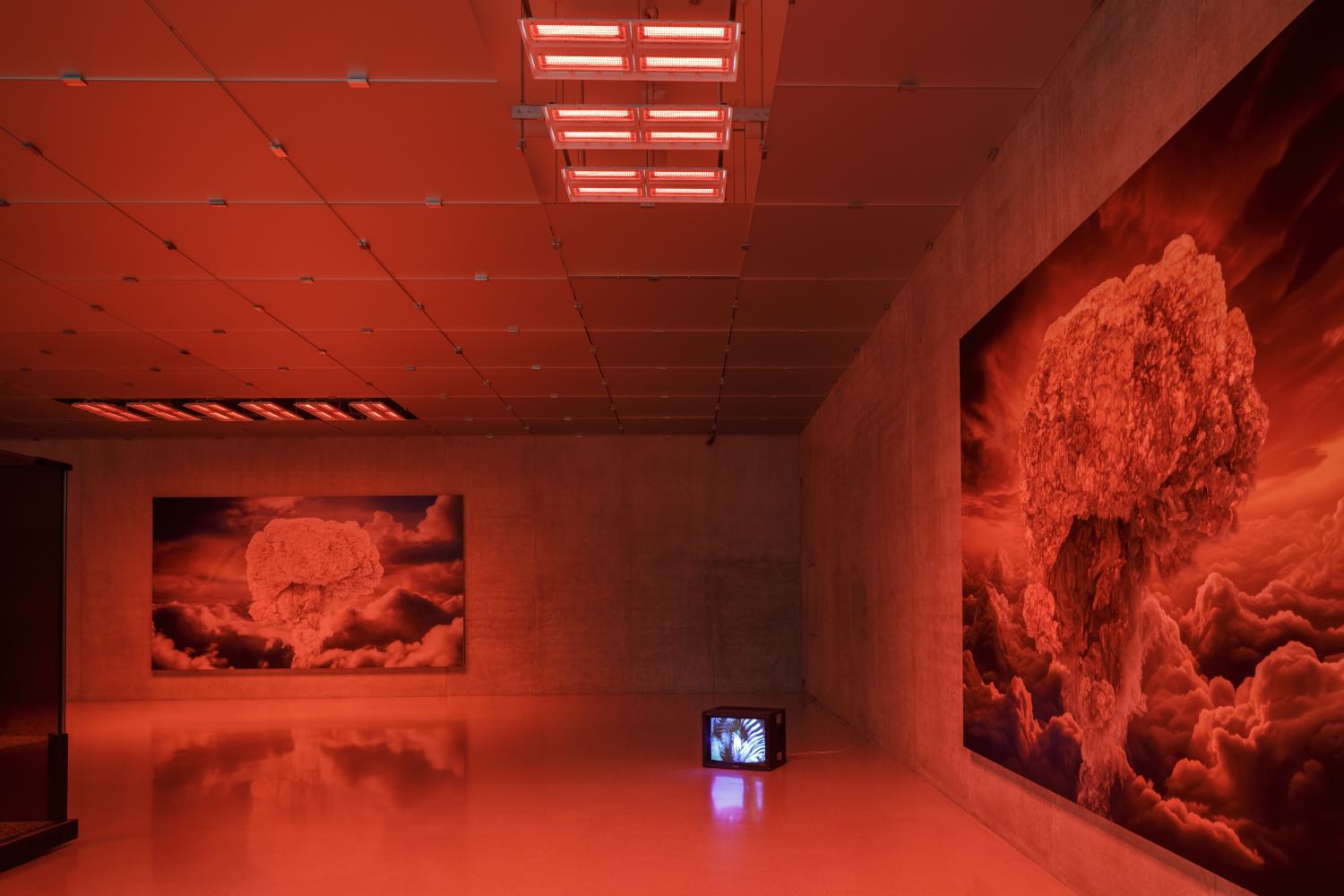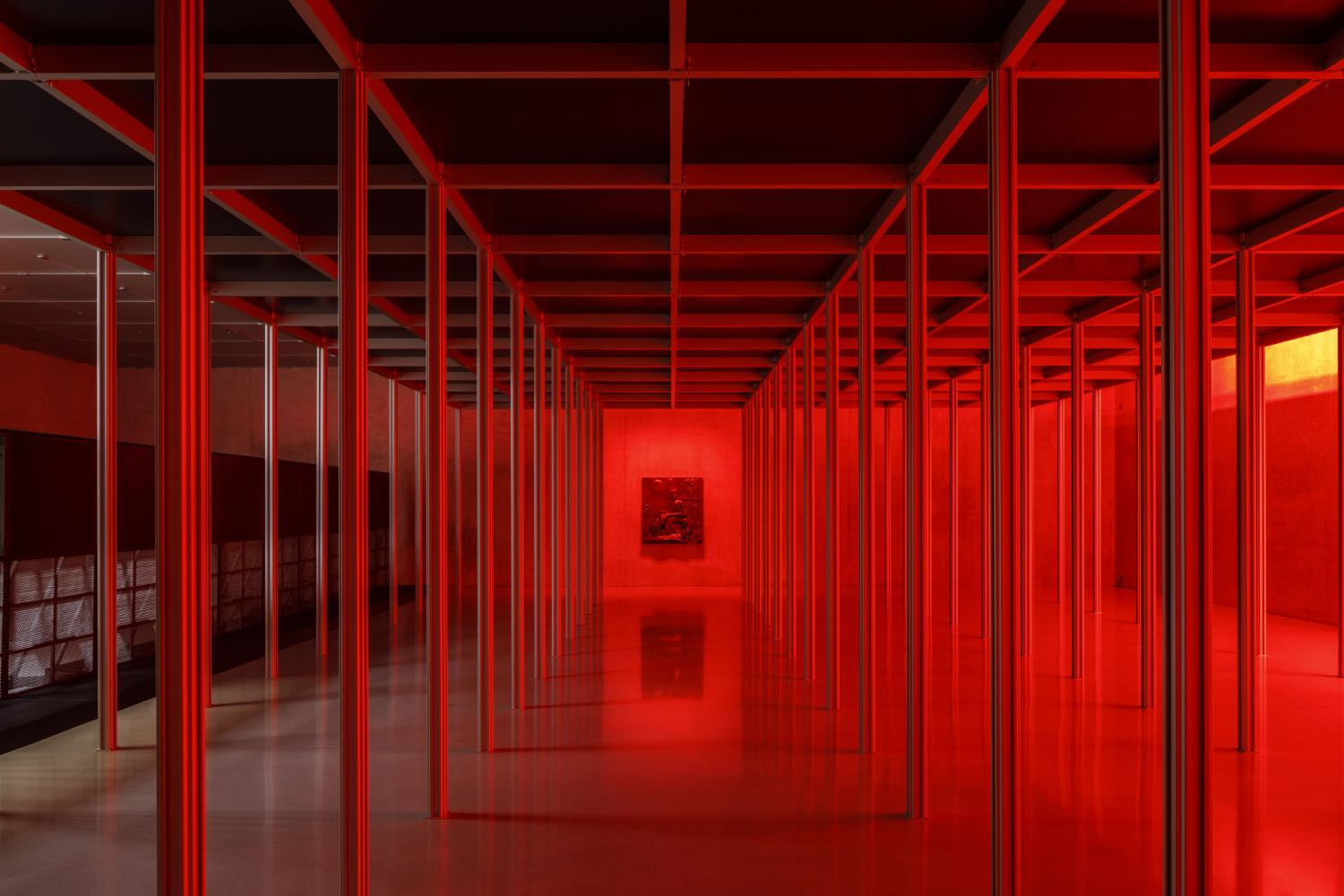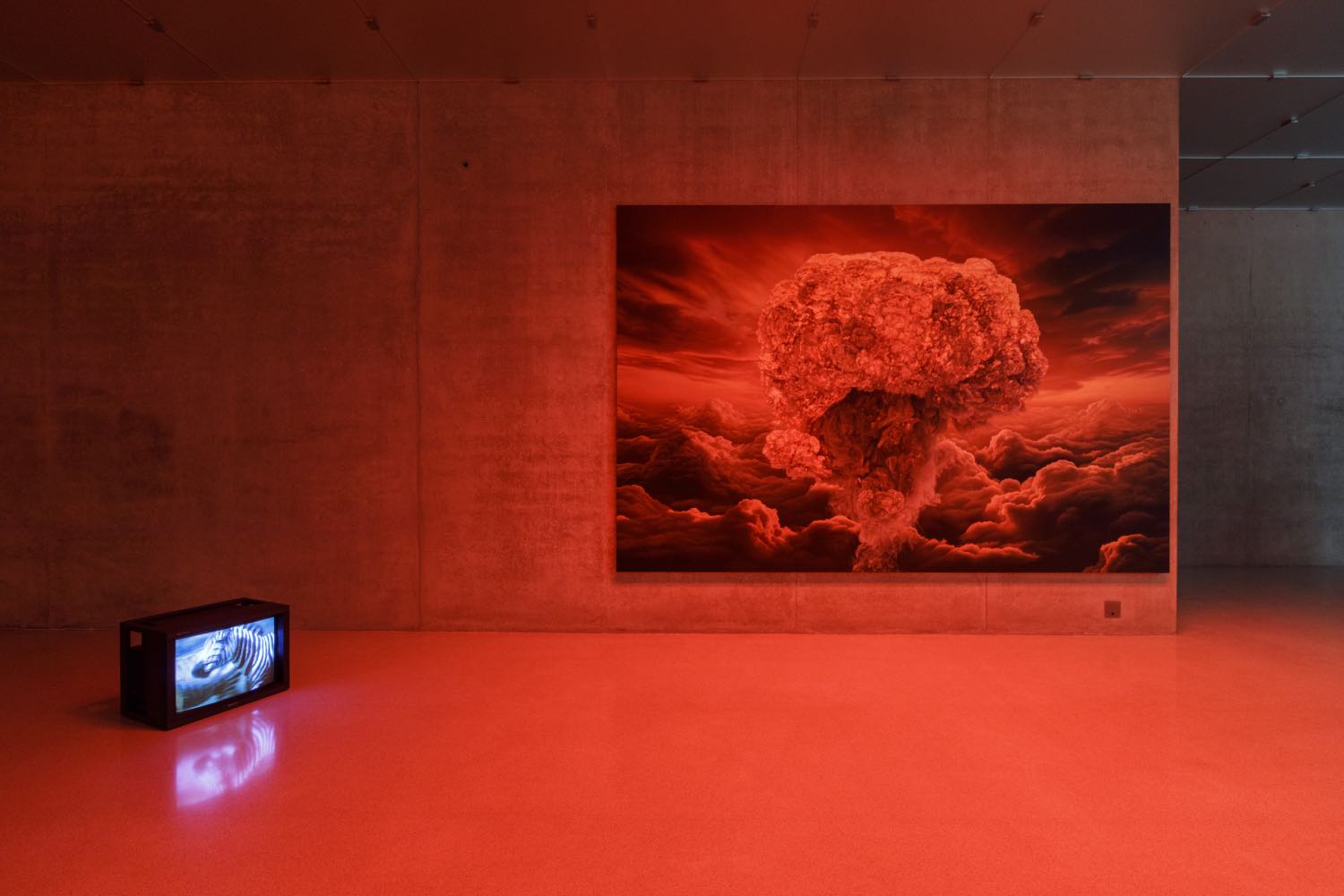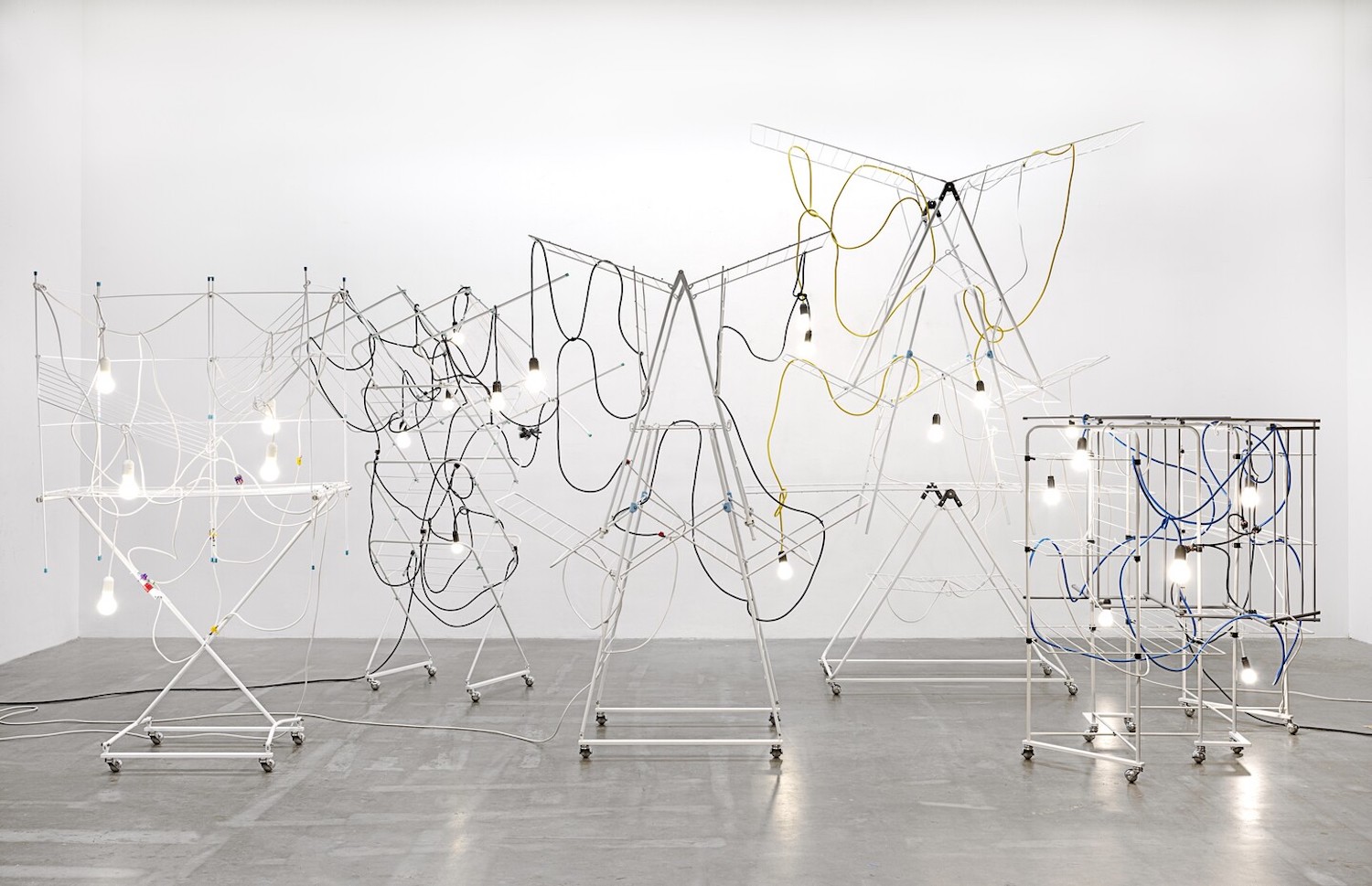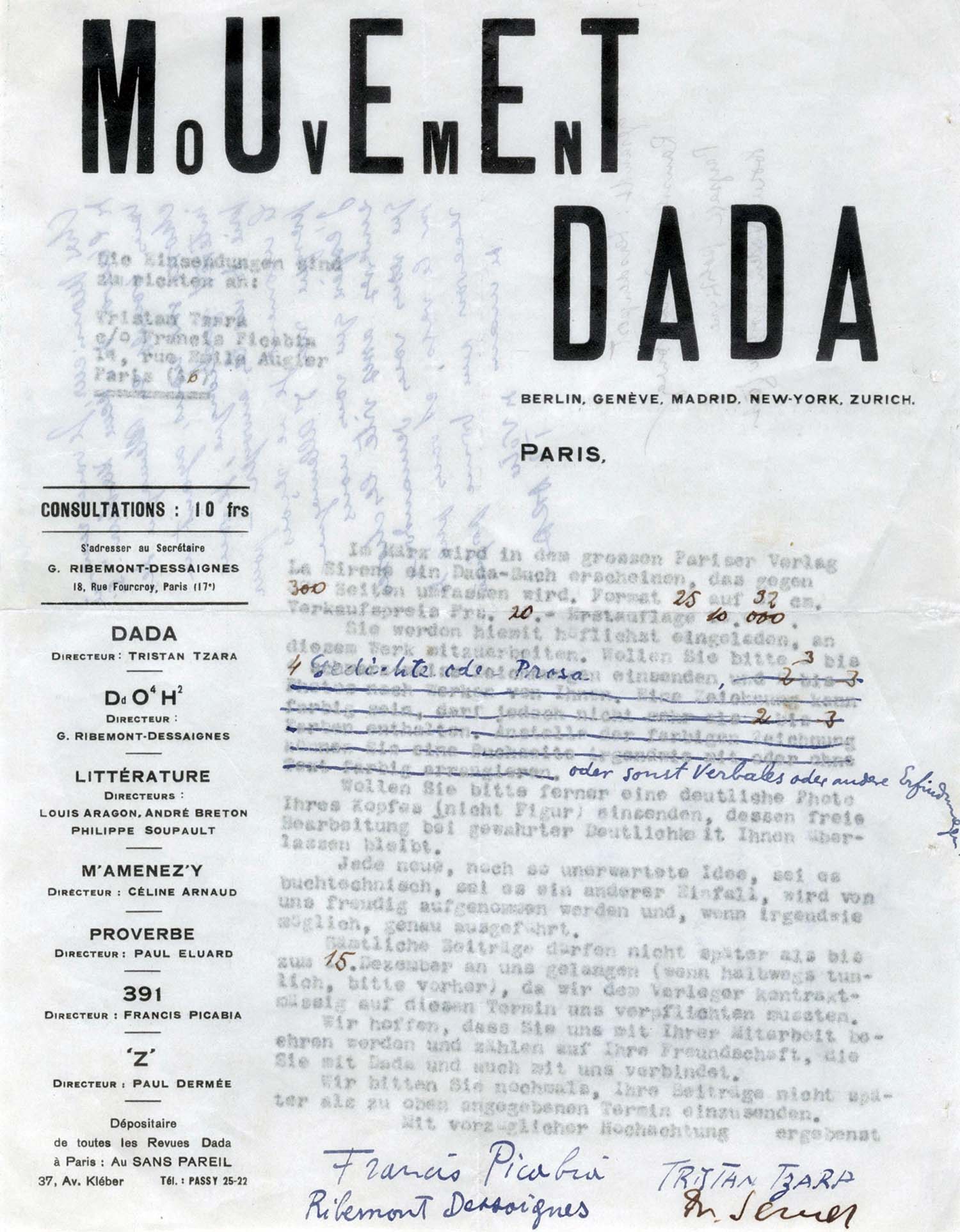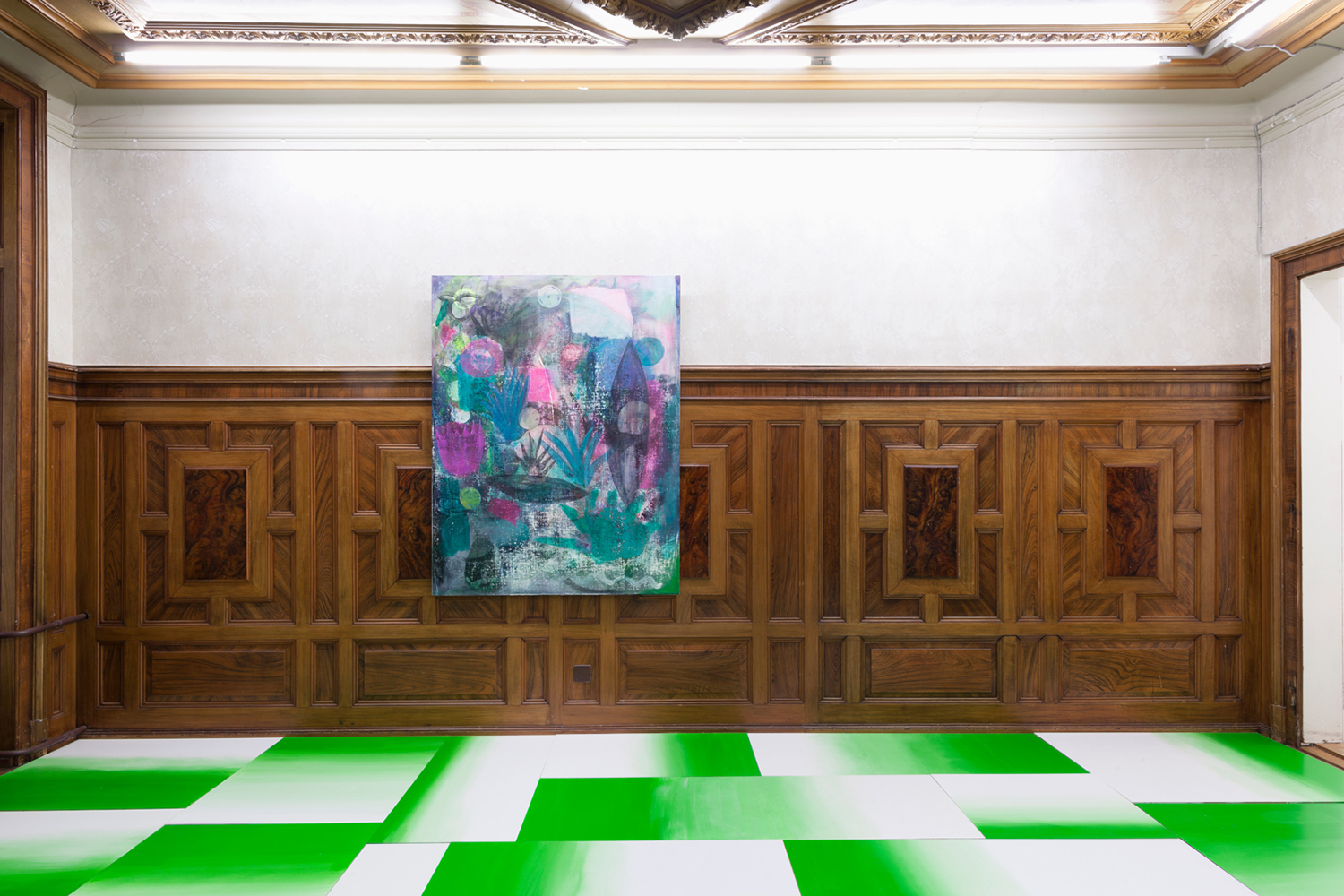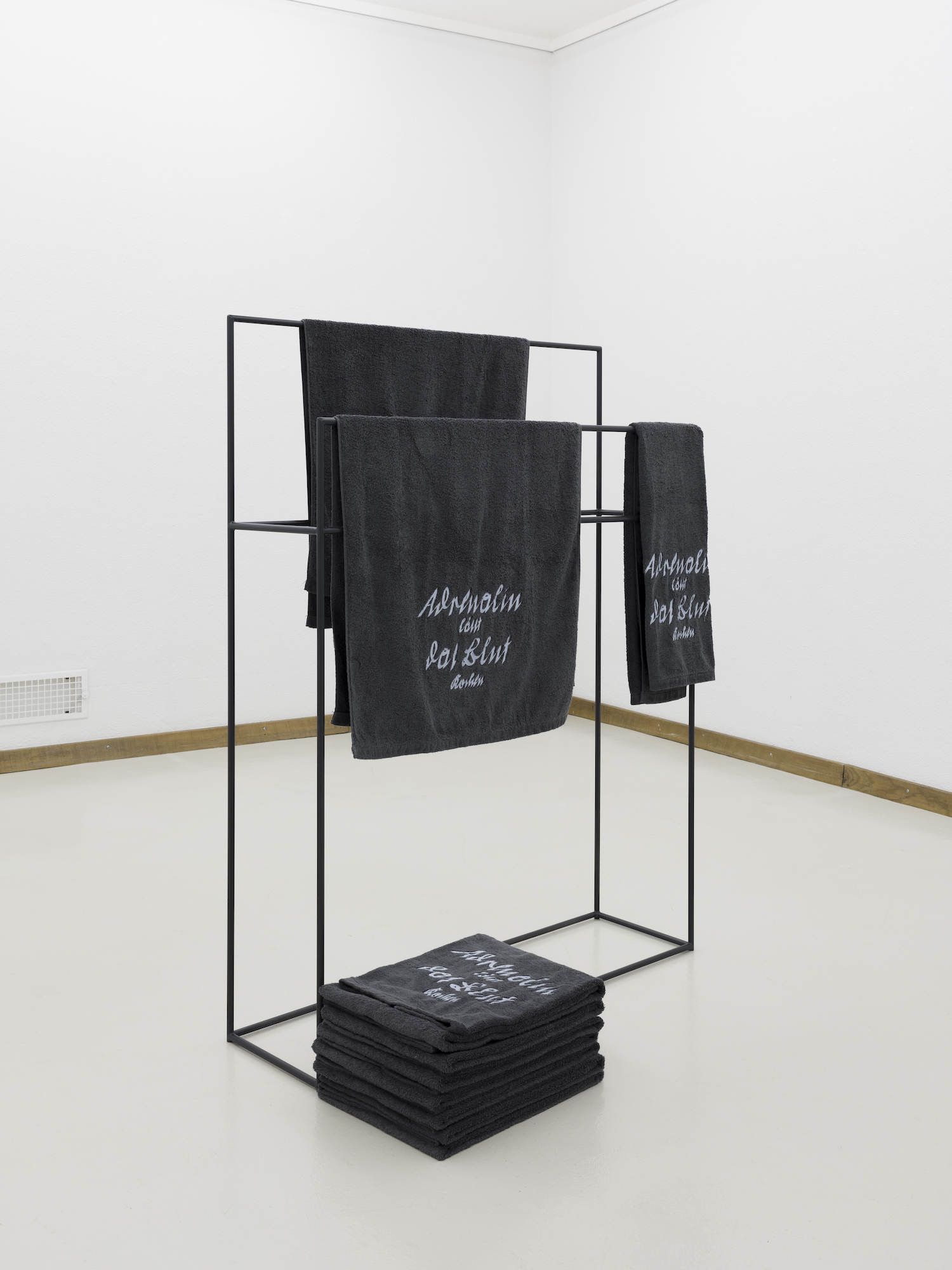“Wish You Were Gay” is the title of Anne Imhof’s solo show at Kunsthaus Bregenz. For many viewers, the first physical interaction with the exhibition will be via the many posters throughout the city: a black background upon which the title is presented in red and blue letters, the typography screaming “American high school.” One might associate adolescent high-school life with fun and parties. However, upon entering the show, it becomes clear that Imhof’s focus is on its more challenging, darker aspects.
Entering the museum is to enter darkness. Even before buying a ticket, visitors can already see the video work Maria (2002), which shows the artist up close, boxing and posing for the camera. The projection takes up a complete wall; music from West Side Story — in which Maria is the tragic female lead — blasts through the speakers. Besides a metal barricade in the middle of the room and a small drawing, the room is empty and completely dark.
The atmosphere feels threatening. Imhof’s larger-than-life video installation is like a declaration of war, like a movie trailer showing the protagonist who will take on the epic battle.
On the first floor, more metal barriers stretch the whole length of the room, forcing visitors to walk around them to reach the installation. The space behind is illuminated by red lights. On the walls, three huge canvases show clouds seen from above, as from an airplane — a beautiful and peaceful motif if not for the atomic bomb mushroom clouds that pierce the cloudscape in each. In the middle of the room stands a glass cube with nothing inside but metal flooring and a mattress. In front of one painting is a glass barrier partly sprayed with graffiti. The ambiance is oppressive and impersonal; the only personal touch is offered by the video work Zebra (2003), which depicts Imhof posing with her upper body bare, followed by footage of zebras nibbling on each other – a gesture of intimacy that to the human eye looks more aggressive than playful.
The dark, post-apocalyptic scene is complemented by the assertive sound of the video work. Imhof has abruptly teleported the viewer from the museum’s scenic location at Bodensee into her world. A feeling of danger arises, matched by a voyeuristic amazement that pushes the viewer to go further.
On the second floor, the room is again divided by metal barriers, forcing the viewer to walk around them; the room behind is again dimly lit in red and filled with evenly spaced metal pillars supporting an artificial ceiling. On the right, a motorcycle on a pedestal catches the eye, but Imhof first guides us to a bronze relief through the path defined by the metal pillars. The ancient and mythological-looking work Untitled (2024) features two figures with disproportionately big hands. In the background, there is a sea with a small mermaid-like creature. On the horizon, we can see a mushroom cloud similar to those depicted in the paintings from the previous floor. In the rough, industrial exhibition space, this sight almost feels like an ancient talisman, a prehistoric relic that might be the key to understanding the world we find ourselves in.
Another video work from 2002 plays on a small monitor to the right. Imhof and a blonde woman move through an old, run-down house and pose for the camera. Then they sit naked in a bathtub, smoking and drinking. The blond woman plays with a mirror, tilting it to Imhof’s face, down her body, and directly into the camera. The intimate setting and the seemingly plotless actions create a “nonperformative” picture of the two protagonists. At the same time, acknowledging that it is a performance, the video conveys a feeling of detachment from reality. The two seem lost, aimlessly playing around.
The elephant in the room is undoubtedly the work My Own Private Idaho (Ducati) (2024) featuring a brand-new Ducati motorcycle installed on a metal pedestal with a glass partition and a metal railing in front of it. On the wall behind it is a large canvas depicting a distorted figure holding a gun to its head, titled Wish You Were Gay III (2024). Speed, rebellion, danger, and freedom are the associations that come to mind when seeing the bike. However, together with the painting and the barriers in front, these elements become unfulfilled desires. The installation as a whole evokes the feeling of running from danger in a dream, barely being able to escape.
In room three the scenery changes. Instead of red light, the room is now illuminated with bright white light. The soundtrack oscillates between punk, metal/trap, and melancholic R&B tracks.
The barrier is different too. Visitors are no longer forced to walk all the way past but are guided through a designated, narrow corridor formed by the barricades. Before entering, one can see another relief, Untitled (2024), rendered in the same aesthetic as the one on the previous floor. However, this time the scenery is darker: alien heads, a wolf or devil’s mask, and the typical scythe of death personified. The relief’s significance will become evident later. Right now, the focus lies on the narrow corridor leading into the exhibition space. With the music blasting and the visitor not knowing what is on the other side, a feeling of excitement and apprehension builds. One has to overcome these feelings to walk through.
On the other side, the visitor finds themselves on a stage like that found at music festivals, installed right above the exhibitions floor – it becomes clear that the artificial ceiling from the previous floor was a stage seen from below. There are bright lights and, situated across the floor, audio monitors that blast music. The three remaining walls each display painted variants of the distorted figure holding a gun to its head (Wish You Were Gay IV, I, and II).
Standing on the stage you somehow feel freed from the red light and gloomy, oppressive atmosphere of the two previous rooms. You are in the spotlight, on the stage, and the performance is in process. However, it doesn’t take long to realize that being in the spotlight is not the desired fulfilment. As the stage takes up most of the floor, there is no real escape from the spotlight. Leaving the stage means getting close to the huge canvases with their dreary ambivalence. The distorted images and colors creates a somewhat pleasing aesthetic, yet the subject matter is of a different nature. The seriousness of a person holding a gun to their face cannot be downplayed; its idolization is a tough line to walk. As the culmination of Imhof’s dark and gloomy exhibition, however, it feels right. Thoughts about the perception of people in the public spotlight, the idolization of the mentally challenged artist, and the image painted by a person in the spotlight arise.
Three video works, Turnpike (2003, in collaboration with Nadine Fraczkowski), Misfits (2003), and Bash (2002) — more performative than the ones on the previous floors — and a motorcycle helmet complete the room. With a spinning head, the viewer might decide to turn and leave through the narrow corridor. With a spinning head, the viewer has to again pass through the narrow corridor when leaving and is directly guided to the bronze relief which now takes full effect. Leaving the stage feels like a confrontation with one’s inner demons, forgotten while on stage, now visualized via the relief. Although stage life couldn’t heal you, it was a welcome distraction.
According to Imhof herself, “Wish You Were Gay” is a very personal show. The inclusion of the roughly twenty-year-old video works reveals a vulnerability in her art that, as the artist has stated, is often not perceived by the public but is actually at the core of her practice. The show also feels very personal because Imhof, known for orchestrating elaborate performance pieces featuring a multitude of performers, has chosen to show a static exhibition with no other individuals onto whom feelings can be projected. After seeing all three floors, I couldn’t help but feel I had gained an intimate insight into her psyche. Desire, fear, and vulnerability are not merely presented to the viewer through individual works; rather, the works are so well connected through the exhibition design that the viewer can truly experience these emotions. Rather than telling us what she feels, Imhof invites us to visit her mind, draw parallels to our own life, and get lost in the human psyche.


